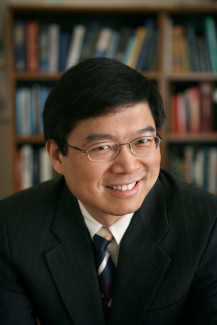
Lihong V. Wang, Ph.D.
Organization: Bren Professor of Medical Engineering and Electrical Engineering Andrew and Peggy Cherng Medical Engineering Leadership Chair California Institute of Technology
Abstract title: Photoacoustic, light-speed, and quantum imaging
About the speaker:
Lihong Wang is Bren Professor of Medical Engineering and Electrical Engineering, Andrew and Peggy Cherng Medical Engineering Leadership Chair, and Executive Officer (aka Department Chair) of Medical Engineering at California Institute of Technology. He has published 590 journal articles and has delivered over 580 talks. Over the course of his career, he has received numerous awards including the Joseph W. Goodman Book Writing Award, NSF CAREER, NIH FIRST, NIH Director's Pioneer, NIH Director's Transformative Research, and NIH/NCI Outstanding Investigator awards, the OSA C.E.K. Mees Medal, IEEE Technical Achievement Award, IEEE Biomedical Engineering Award, SPIE Britton Chance Biomedical Optics Award, IPPA Senior Prize, and OSA Michael S. Feld Biophotonics Award. He is a Fellow of the AAAS, AIMBE, Electromagnetics Academy, IAMBE, IEEE, OSA, and SPIE as well as a Foreign Fellow of COS. An honorary doctorate was conferred on him by Lund University, Sweden. He was inducted into the National Academy of Inventors and the National Academy of Engineering.
His laboratory was the first to report in vivo/functional photoacoustic tomography (top 2 cited in photoacoustics), 3D photoacoustic microscopy (top 2 cited in photoacoustics), photoacoustic endoscopy, photoacoustic reporter gene imaging, the photoacoustic Doppler effect, the universal photoacoustic reconstruction algorithm (widely adopted), microwave-induced thermoacoustic tomography, ultrasound-modulated optical tomography, time-reversed ultrasonically encoded optical focusing, light-speed compressed ultrafast photography (219 trillion frames/s, world's fastest real-time camera), and open-source Monte Carlo simulation of light transport in tissues (widely cited, celebrated by the Journal of Biomedical Optics in 2022). Photoacoustic imaging broke through the long-standing diffusion limit on the penetration of optical imaging, providing the only technology for noninvasive multiscale biochemical, functional, and molecular imaging from organelles to humans at high resolution. The technology has been commercialized by dozens of companies for both preclinical and clinical imaging (FDA approved for breast imaging).